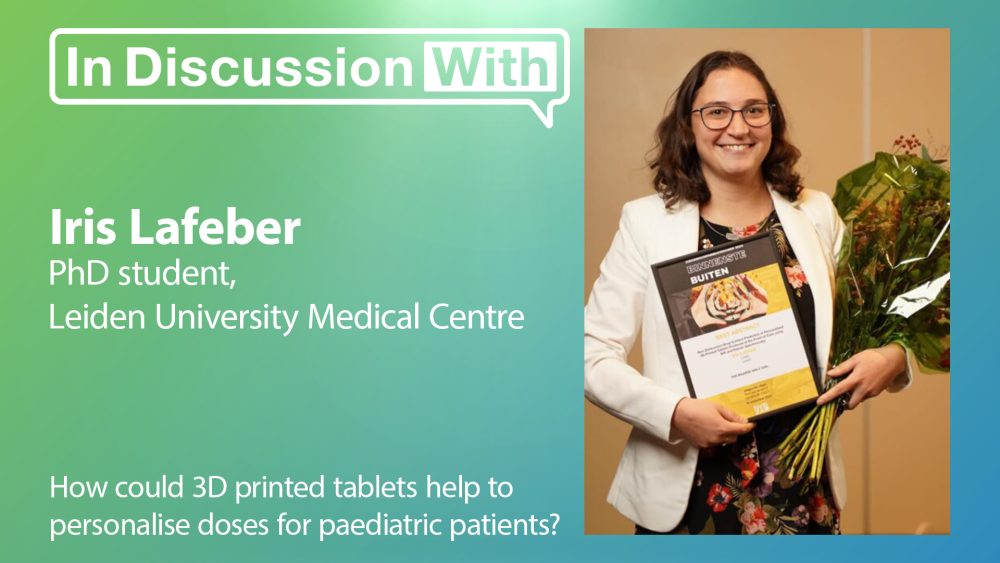Advertisment
How could 3D printed tablets help to personalise doses for paediatric patients?

Three-dimensional (3D) printing is a method of creating a 3D object layer-by-layer using computer-created design. It has been used to produce personalised bone grafts and dental implants but it can also be used to produce tablets containing personalised doses of medicines. In this series of short videos, pharmacist and PhD student Iris Lafeber (University of Leiden Medical Centre, The Netherlands) describes her work in developing and testing such products.
Why is 3D printing good for paediatric tablets?
Paediatric patients span a wide range of sizes and metabolic capacities – from pre-term babies to adolescents – and require a wide range of doses to meet their needs. Often the available tablets are too bulky for young children to swallow and the doses are too large. Pharmacists often have to compound medicines for children, for example, by preparing tailor-made oral solutions, but this is a labour- and time-intensive process. “3D printing could be especially suitable for paediatric doses because it can produce the correct dose for paediatric patients without the extra labour that is needed when compounding, for instance, an oral solution”, says Ms Lafeber.
At the GERPAC congress in 2023 she presented the results of a study entitled “The determination of bio-equivalence of 3D printed doses for paediatric use”. This described how 3D-printed tablets containing sildenafil had been prepared and then tested not only against manufacturing standards (product uniformity, drug content etc) but also for bio-availability (i.e. the extent and rate at which the drug reaches the bloodstream).
How semi-solid extrusion technology works in 3D tablet printing
Semi-solid extrusion (SSE) technology for tablets involves printing from a syringe filled with a gel or paste.
In this case, the material (‘ink’) used to make the tablets was a lipid semi-solid – polyethylene glycol monostearate. “It melts at about 45-50° C ….. however, if you stay below that temperature it softens but it doesn’t quite melt and that is the temperature at which we operate”, explains Ms Lafeber. Keeping the formulation at 43° C, just below the melting point means that it becomes pliable and can be moulded or ‘printed’ in layers.
Sildenafil was chosen for this study because it is used in low dosages for the treatment of pulmonary arterial hypertension in young children but it is difficult to provide accurate doses using the available products. Although the 3D-printed tablets look and feel different from compressed tablets, volunteers in this study did not perceive them as being particularly different. When asked about the experience, they said ‘it was just swallowing a tablet’.
Can 3D tablet printing be translated into practice?
Ms Lafeber conducted a randomised, cross-over study which demonstrated bioequivalence of the 3D-printed sildenafil tablets with one commercial formulation.
In future, pharmacies might be able to print tablets on demand but for this to happen two key hurdles will need to be overcome. First, measures to check the quality of the printed tablets are required and second, stock mixtures of pharmaceutical ink (ideally prepared by the pharmaceutical industry) will be needed.
At present, 3D printing of tablets is a rapidly developing field. Ms Lafeber says, “I think this is a wonderful technique that can be of benefit for a lot of patients so I really hope to see this being implemented very soon – and very safely”.
Read and watch the full series on our website or on YouTube.





